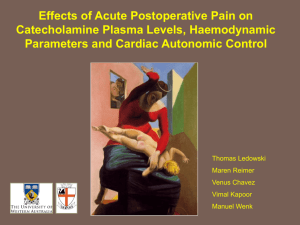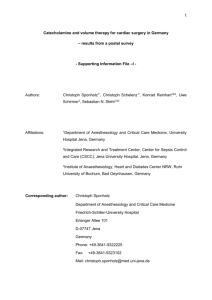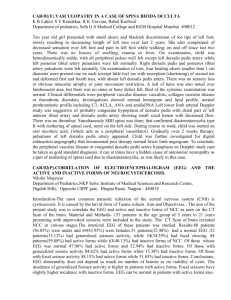patients complications
advertisement
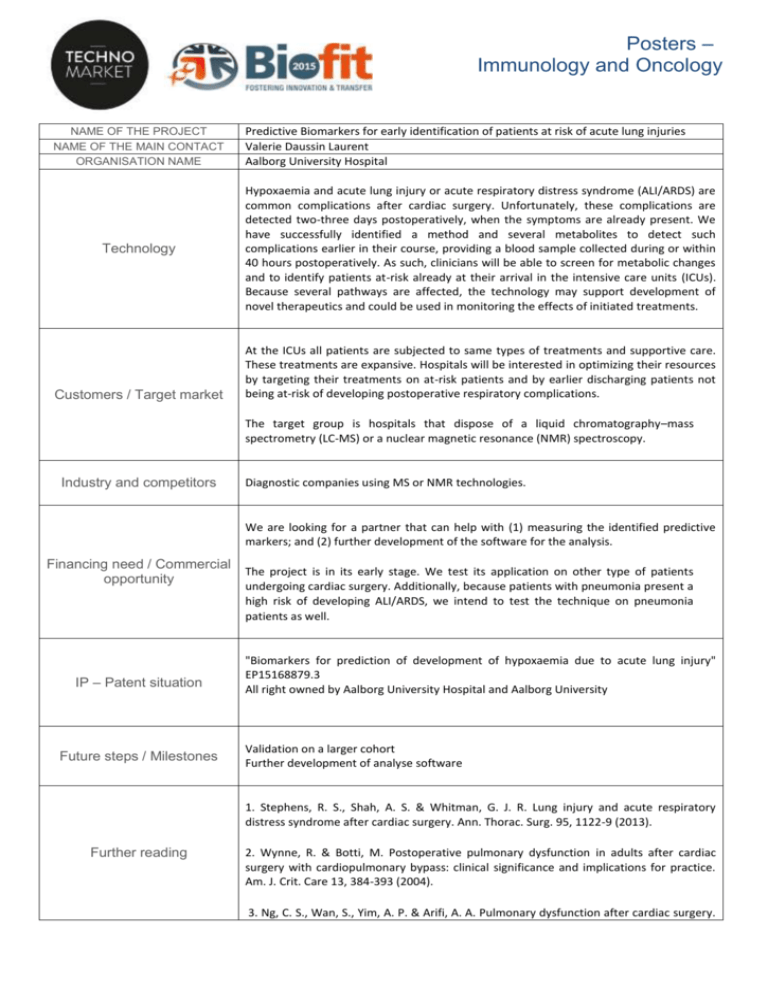
Posters – Immunology and Oncology NAME OF THE PROJECT NAME OF THE MAIN CONTACT ORGANISATION NAME Technology Customers / Target market Predictive Biomarkers for early identification of patients at risk of acute lung injuries Valerie Daussin Laurent Aalborg University Hospital Hypoxaemia and acute lung injury or acute respiratory distress syndrome (ALI/ARDS) are common complications after cardiac surgery. Unfortunately, these complications are detected two-three days postoperatively, when the symptoms are already present. We have successfully identified a method and several metabolites to detect such complications earlier in their course, providing a blood sample collected during or within 40 hours postoperatively. As such, clinicians will be able to screen for metabolic changes and to identify patients at-risk already at their arrival in the intensive care units (ICUs). Because several pathways are affected, the technology may support development of novel therapeutics and could be used in monitoring the effects of initiated treatments. At the ICUs all patients are subjected to same types of treatments and supportive care. These treatments are expansive. Hospitals will be interested in optimizing their resources by targeting their treatments on at-risk patients and by earlier discharging patients not being at-risk of developing postoperative respiratory complications. The target group is hospitals that dispose of a liquid chromatography–mass spectrometry (LC-MS) or a nuclear magnetic resonance (NMR) spectroscopy. Industry and competitors Diagnostic companies using MS or NMR technologies. We are looking for a partner that can help with (1) measuring the identified predictive markers; and (2) further development of the software for the analysis. Financing need / Commercial opportunity IP – Patent situation Future steps / Milestones The project is in its early stage. We test its application on other type of patients undergoing cardiac surgery. Additionally, because patients with pneumonia present a high risk of developing ALI/ARDS, we intend to test the technique on pneumonia patients as well. "Biomarkers for prediction of development of hypoxaemia due to acute lung injury" EP15168879.3 All right owned by Aalborg University Hospital and Aalborg University Validation on a larger cohort Further development of analyse software 1. Stephens, R. S., Shah, A. S. & Whitman, G. J. R. Lung injury and acute respiratory distress syndrome after cardiac surgery. Ann. Thorac. Surg. 95, 1122-9 (2013). Further reading 2. Wynne, R. & Botti, M. Postoperative pulmonary dysfunction in adults after cardiac surgery with cardiopulmonary bypass: clinical significance and implications for practice. Am. J. Crit. Care 13, 384-393 (2004). 3. Ng, C. S., Wan, S., Yim, A. P. & Arifi, A. A. Pulmonary dysfunction after cardiac surgery. CHEST Journal 121, 1269-1277 (2002). 4. Kor, D. J. et al. Predicting risk of postoperative lung injury in high-risk surgical patients: a multicenter cohort study. Anesthesiology 120, 1168-1181 (2014). 5. Rubenfeld, G. D. & Herridge, M. S. Epidemiology and outcomes of acute lung injury. Chest 131, 554-62 (2007). Contact person Valerie Daussin Laurent, Business Developer, Aalborg University Hospital vkd@rn.dk 1/2



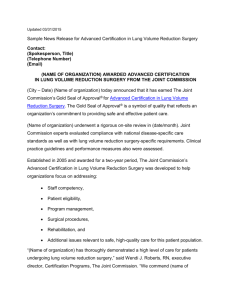
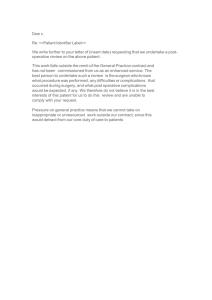
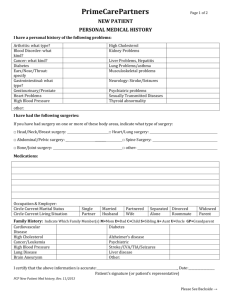


![Joel_Bradley_[NCSC_ACS]_Bradley_](http://s3.studylib.net/store/data/007144708_1-61c5732b3c6b9504141b9285237b4b69-300x300.png)
